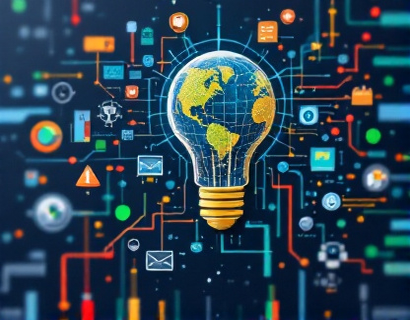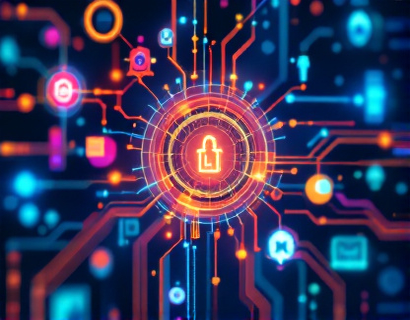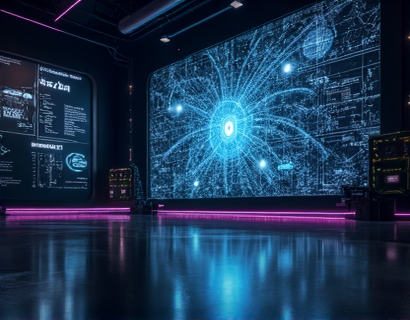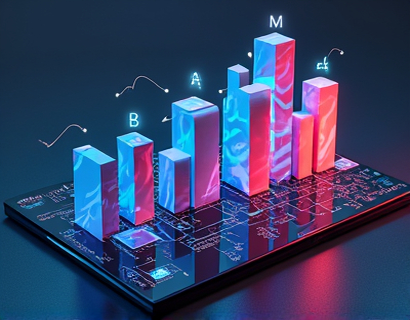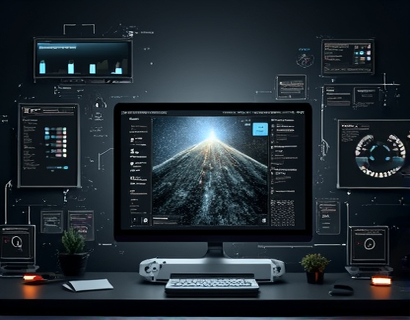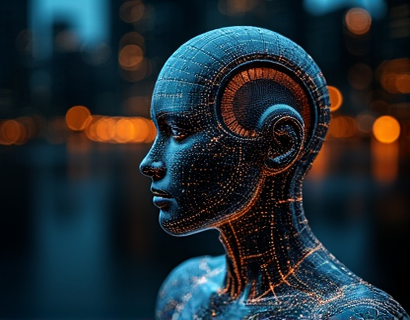Transforming Education with AI-Powered Chatbots: Ensuring Safe and Verified Access to Industry Insights for Students
The integration of artificial intelligence in education has opened new avenues for learning, particularly through the use of AI-powered educational chatbots. These chatbots provide a secure and verified platform for children and students to access specialized industry insights and workshop knowledge. The primary goal is to enhance learning through safe and interactive content, making education more accessible and engaging. This article delves into how these AI-driven tools are revolutionizing the way students interact with educational material, ensuring that the content is both verified and suitable for young learners.
Understanding the Need for Safe Educational Content
The digital age has brought about an explosion of information, but not all of it is suitable or accurate for children and students. The need for a safe and verified platform becomes paramount in this context. Traditional educational resources, while valuable, often lack the interactivity and immediacy that modern students expect. AI-powered chatbots bridge this gap by offering a tailored learning experience that is both safe and informative. These chatbots are designed to filter and present content that is not only accurate but also age-appropriate, ensuring that students can explore complex topics without encountering inappropriate material.
How AI Chatbots Enhance Learning
AI chatbots in education serve multiple purposes. They act as personal tutors, providing instant answers to questions, guiding students through complex concepts, and offering personalized learning paths. By leveraging natural language processing, these chatbots can understand and respond to user queries in a conversational manner, making the learning process more engaging and effective. For instance, a student asking about a specific industry practice can receive detailed explanations, examples, and even interactive simulations to solidify their understanding.
Moreover, AI chatbots can adapt to the learning pace of individual students. They can identify areas where a student might be struggling and provide additional resources or exercises to reinforce learning. This adaptability ensures that each student receives the support they need, fostering a more inclusive and effective educational environment.
Verified Content for Trust and Reliability
One of the critical features of AI-powered educational chatbots is the emphasis on verified content. In an era where misinformation can spread rapidly, ensuring that the information provided to students is accurate and trustworthy is essential. These chatbots are integrated with databases of verified sources, including academic journals, industry reports, and expert opinions. This ensures that the content presented to students is not only relevant but also credible.
The verification process involves multiple layers of review, including expert validation and cross-referencing with reputable sources. This multi-step approach minimizes the risk of incorrect or misleading information reaching students. Additionally, the chatbots can provide citations and references for the information they share, allowing students to further explore and verify the content on their own. This transparency builds trust and encourages a deeper engagement with the material.
Interactive and Engaging Learning Experiences
Interactivity is a key component of AI-powered educational chatbots. Unlike static textbooks or traditional online courses, these chatbots create a dynamic learning environment where students can actively participate. Through conversational interfaces, students can ask questions, engage in discussions, and even participate in role-playing scenarios that simulate real-world situations. This interactive approach not only makes learning more enjoyable but also helps in better retention of information.
For example, a student learning about a particular industry can engage in a simulated interview with a virtual expert, asking questions and receiving detailed responses. This not only enhances their understanding of the industry but also develops their communication skills. Similarly, interactive quizzes and games can be integrated into the chatbot's functionality, making the learning process fun and engaging.
Access to Specialized Industry Insights
One of the most significant advantages of AI-powered educational chatbots is their ability to provide specialized industry insights. Students and children can gain valuable knowledge directly from industry professionals and experts, without the need for physical presence or expensive resources. These chatbots can connect students with a wealth of information on various industries, from technology and healthcare to arts and sciences.
The chatbots can offer detailed explanations of industry trends, emerging technologies, and career paths. They can also provide case studies and real-world examples that illustrate how theoretical concepts are applied in practice. This exposure helps students develop a broader perspective and a deeper understanding of the industries they are interested in, potentially inspiring future career choices.
Workshop Knowledge and Resources
In addition to general industry insights, AI chatbots can serve as a gateway to specialized workshops and resources. These workshops are designed to provide hands-on learning experiences, allowing students to apply what they have learned in a practical setting. The chatbots can guide students through the registration process, provide schedules, and even offer preparatory materials to ensure they are well-prepared for the workshops.
For instance, a student interested in coding might access a chatbot to find out about upcoming coding workshops. The chatbot can provide details on the workshop's objectives, the skills to be acquired, and the projects to be worked on. It can also offer tips on how to get the most out of the workshop, such as recommended pre-reading materials or practice exercises. This comprehensive support system ensures that students can fully benefit from the workshop experience.
Child-Friendly and Safe Environment
Ensuring a safe and child-friendly environment is a top priority for AI-powered educational chatbots. These platforms are designed with strict safety protocols to protect young users. Access controls and parental permissions can be implemented to monitor and manage a child's interactions with the chatbot. The content is carefully curated to be age-appropriate, avoiding any potentially harmful or inappropriate material.
Moreover, the chatbots are programmed to recognize and respond appropriately to child-specific queries. They use simplified language and provide explanations that are easy for children to understand. The chatbots can also detect and address sensitive topics with care, ensuring that the learning experience remains positive and supportive.
Promoting Critical Thinking and Creativity
Beyond providing information, AI chatbots can play a crucial role in promoting critical thinking and creativity among students. By engaging in discussions and problem-solving activities, students are encouraged to think critically and develop their own ideas. The chatbots can pose open-ended questions, present different perspectives, and challenge students to think beyond the obvious answers.
For example, in a science workshop, a chatbot might present a problem related to environmental conservation and ask students to propose solutions. This not only reinforces their understanding of the topic but also fosters creativity and critical thinking skills. Such interactive sessions help students develop a more analytical mindset, preparing them for future academic and professional challenges.
Supporting Diverse Learning Styles
Every student has a unique learning style, and AI chatbots are well-equipped to cater to this diversity. Whether a student is a visual learner, an auditory learner, or prefers hands-on activities, the chatbot can adapt its approach to suit individual preferences. For visual learners, the chatbot can provide diagrams, videos, and infographics. For auditory learners, it can offer audio explanations and discussions. For kinesthetic learners, interactive simulations and virtual labs can be integrated into the learning experience.
This flexibility ensures that all students can engage with the material in a way that best suits their learning style, enhancing the overall effectiveness of the educational process. By accommodating diverse learning needs, AI chatbots help create an inclusive educational environment where every student can thrive.
Continuous Improvement and Feedback Mechanisms
The effectiveness of AI-powered educational chatbots is continually improved through feedback mechanisms. Students and educators can provide input on the chatbot's performance, suggesting areas for improvement and new features to be added. This feedback loop allows developers to refine the chatbot's algorithms, ensuring that it remains up-to-date with the latest educational trends and technological advancements.
Additionally, performance metrics are monitored to assess the chatbot's impact on student learning outcomes. Data analytics can reveal patterns in student engagement, areas of difficulty, and overall progress. This information is invaluable for educators and administrators, helping them make data-driven decisions to enhance the educational experience further.
Conclusion
AI-powered educational chatbots represent a significant leap forward in providing safe, verified, and interactive learning experiences for students and children. By offering access to specialized industry insights and workshop knowledge, these chatbots bridge the gap between traditional education and the digital world. They not only enhance the learning process but also ensure that students are exposed to accurate and reliable information. As technology continues to evolve, the potential for AI chatbots in education is vast, promising a future where learning is more personalized, engaging, and effective.











